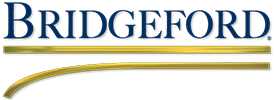 As domestic and international families continue to seek privacy and asset protection in an increasingly transparent world, there continues to be a debate over whether offshore asset protection trusts, available in jurisdictions such as Nevis and the Cooks Island, are better asset protection vehicles than U.S. domestic asset protection trusts, available in a small number of states including South Dakota. As the United States has emerged as both a privacy and asset protection “haven” globally, South Dakota law renders the debate moot and provides settlors an easy to understand and compelling option for obtaining asset protection – bringing both domestic and offshore asset protection strategies together in one trust instrument, thereby providing a solution that brings the “best of both worlds”.
As domestic and international families continue to seek privacy and asset protection in an increasingly transparent world, there continues to be a debate over whether offshore asset protection trusts, available in jurisdictions such as Nevis and the Cooks Island, are better asset protection vehicles than U.S. domestic asset protection trusts, available in a small number of states including South Dakota. As the United States has emerged as both a privacy and asset protection “haven” globally, South Dakota law renders the debate moot and provides settlors an easy to understand and compelling option for obtaining asset protection – bringing both domestic and offshore asset protection strategies together in one trust instrument, thereby providing a solution that brings the “best of both worlds”.
Domestic Asset Protection Trusts
Similar to an offshore asset protection trust, a domestic asset protection trust (DAPT) legally shields assets from third party liability and lawsuits while permitting settlors to retain some control over the trust assets and enjoy a discretionary benefit during their lifetime. Therefore, an individual can establish a DAPT that is fully discretionary, meaning settlors can receive financial benefit from the trust (income and discretionary principal distributions), and protect trust assets from creditor claims and lawsuits, while maintaining control over the investment management function through the directed trust structure.
South Dakota has one of the oldest and most progressive self-settled domestic asset protection provisions in the U.S. With its two year “look back” fraudulent conveyance statute, South Dakota’s provision is among the shortest in the country.
Bringing Together Domestic and Offshore Strategies
South Dakota Statute 55-3-47 provides a mechanism that provides both domestic and offshore asset protection within one trust instrument. If a judgment is obtained in any action brought against a trustee of a South Dakota trust for payment, where a foreign court declines to apply the law of South Dakota relative to the asset protection nature of the trust in determining the validity, construction, or administration of such trust, or the effect of a spendthrift provision, the statute clearly indicates that the trust company has no power or authority under South Dakota law to recognize or pay the judgment.
Under the statute, the only power granted to the trust company is to resign and appoint a successor trust company in accordance with the terms of the trust instrument and convey the trust property to the successor trustee. Presumably, the judgment obtained would then be returned unsatisfied and the creditor would need to commence the action against the successor trustee.
In this instance, it is important to note that there is nothing in the statute preventing a South Dakota trust company from transferring the trust and its assets to an offshore successor trust company, properly named in the document, thereby creating a very formidable asset protection strategy utilizing both domestic and offshore asset protection in one trust instrument. By operation of law and under appropriate trust provisions, the trust assets can be transferred offshore only when needed. Until the offshore asset protection is needed, the trust is administered in South Dakota and assets are held in the U.S. Therefore, the settlor truly enjoys the “best of both worlds” by avoiding the negative attributes associated with having a trust administered in an offshore jurisdiction (high costs, unstable governments, potential restrictive access to assets) while availing themself of the protection benefits of an offshore jurisdiction, should the need arise.
When coupled with South Dakota’s powerful privacy provisions – considered the best in the nation – this asset protection planning technique available under South Dakota law is yet another example of the vital importance of selecting the best U.S. trust jurisdiction in the trust planning process. To learn more about this powerful planning tool used for both U.S. and international families, you can watch our webinar – Domestic Asset Protection Trusts: A Powerful Planning Tool for Both U.S. and International Families.
For more information on bringing together domestic and offshore asset protection strategies, please contact us via our contact page or by calling (605) 224-9189.


